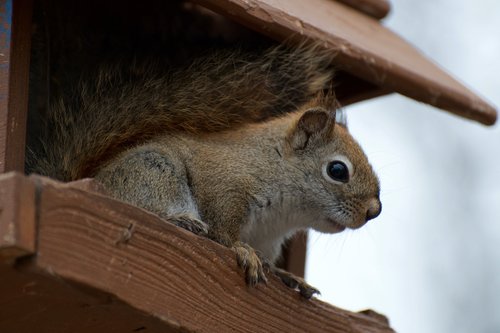- April 16, 2021
- Posted by: mukisahilda
- Category: Uncategorized
No Comments
Tree squirrels have found their way into the hard-to-access attics of our cottages at Camp Besania. Dead or alive, they must be shown the exit before they wreck havoc especially by rotting the attics, gnawing holes in the ceiling, chewing on electric wires and wooden supports as well as harbor and spread fleas and ticks. In the outdoors of Camp Besania, they have a tendency to destroy bird feeders and fruits especially the conch apples and the giant granadilla/ tumbo.
Ideas gathered so far include:
- pest-proofing the attic by sealing up entry points. Additionally the tree branches that overhang the cottages should be trimmed in order to cut off access. Trim branches within a 5 to 10 feet from the structure
- creating a nasty, repellent environment for them: Soak a rag in a chemical-based repellent such as ammonia or some other strong household cleaner and place it in or near the squirrels’ nesting place. The chemicals may be found in shops for hardware or laboratory supplies. Natural repellents, among them red pepper and predator urine can also be effective
- connecting or repeatedly flashing bright lights in the attic so that the squirrels feel exposed and insecure. They will leave on their own. You may also scare them with human voices by placing a talk-stationed radio in the attic
- conserving them for eco-attraction by placing heavy wooden nests in trees where they will find enough comfort to keep out of the attic. Their favorite foods such as nuts, fruits, insects, mushrooms and water may be provided near their shelter. However, all these attractions must be placed far from the residential space
Using the same foods as bait, the squirrels’ numbers may be periodically regulated by poisoning some of them. The key sign of overpopulation is non-stop fights among them.
